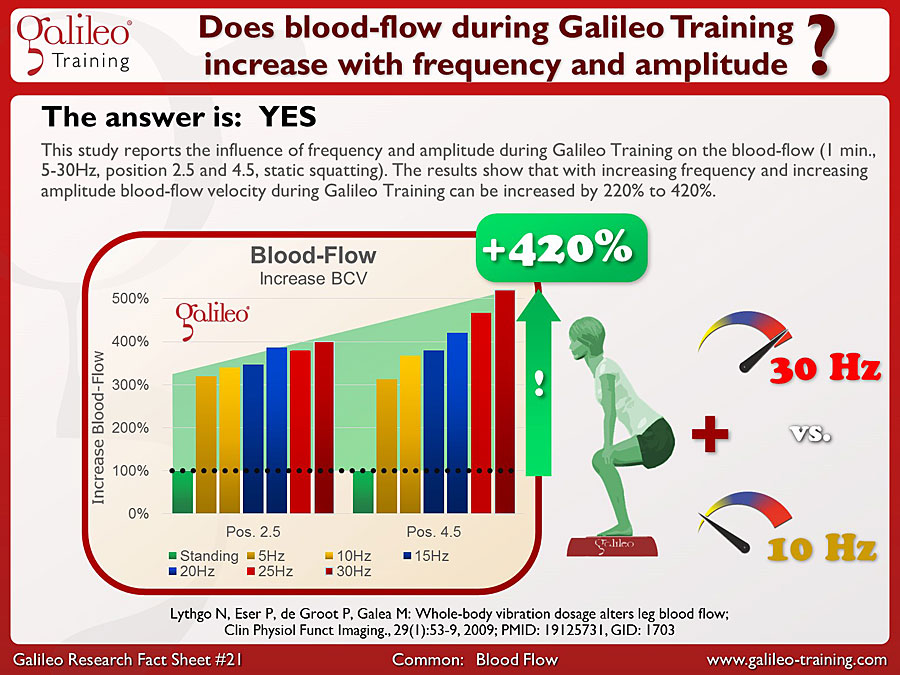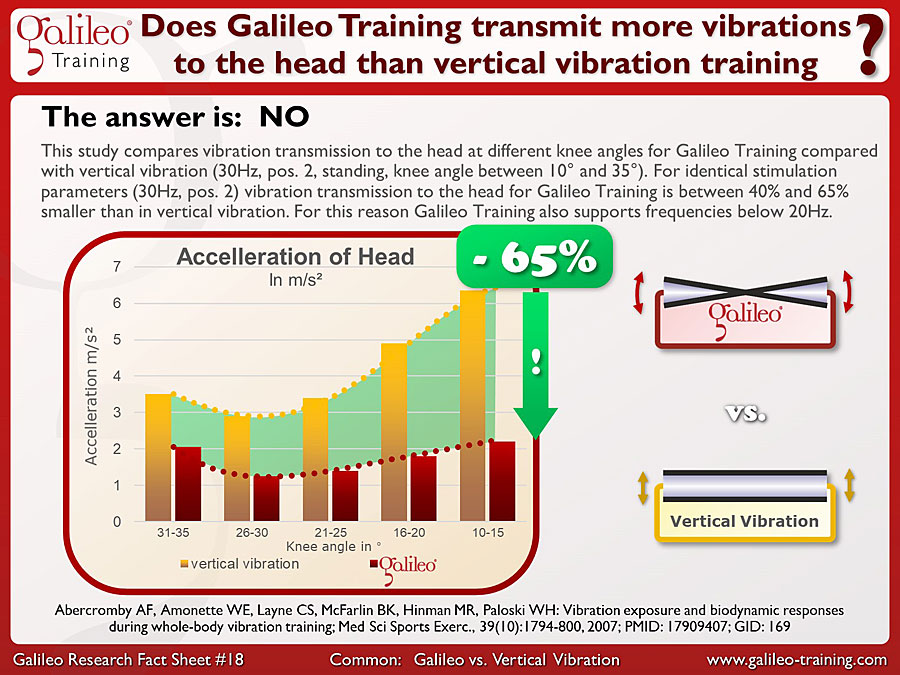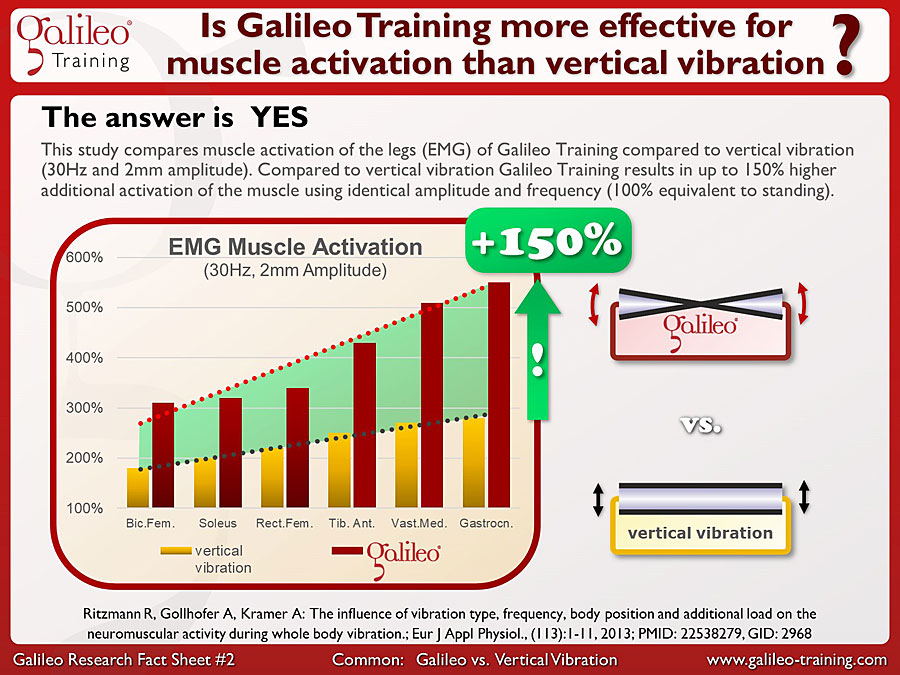Tag Archives: Vibration Training
Galileo Research Facts No. 21: Does blood-flow during Galileo Training increase with frequency and Amplitude?
This study reports the influence of frequency and amplitude during Galileo Training on the blood-flow (1 min., 5-30Hz, position 2.5 and 4.5, static squatting). The results show that with increasing frequency and increasing amplitude blood-flow velocity during Galileo Training can be increased by 220% to 420%.
Galileo Research Facts No. 18: Does Galileo Training transmit more vibrations to the head than vertical vibration training?
This study compares vibration transmission to the head at different knee angles for Galileo Training compared with vertical vibration (30Hz, pos. 2, standing, knee angle between 10° and 35°). For identical stimulation parameters (30Hz, pos. 2) vibration transmission to the head for Galileo Training is between 40% and 65% smaller than in vertical vibration. For this reason Galileo Training also supports frequencies below 20Hz...
Galileo Research Facts No. 2: Is Galileo Training more effective for muscle activation than vertical vibration?
This study compares muscle activation of the legs (EMG) of Galileo Training compared to vertical vibration (30Hz and 2mm amplitude). Compared to vertical vibration Galileo Training results in up to 150% higher additional activation of the muscle using identical amplitude and frequency (100% equivalent to standing)...


